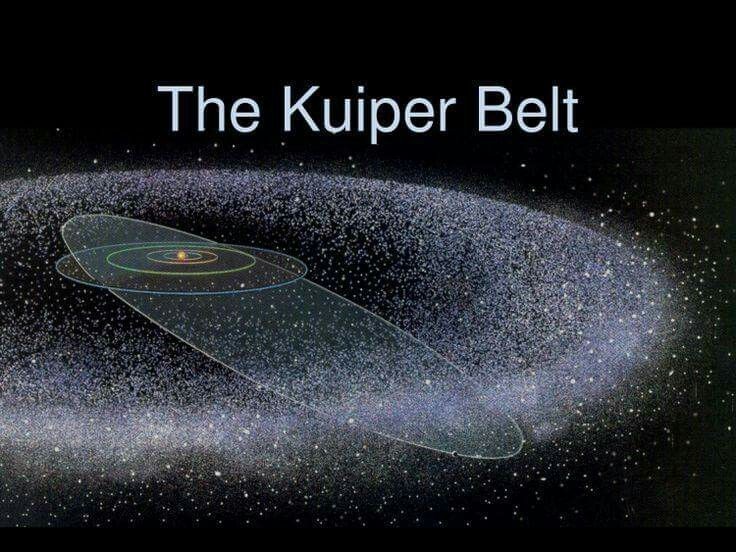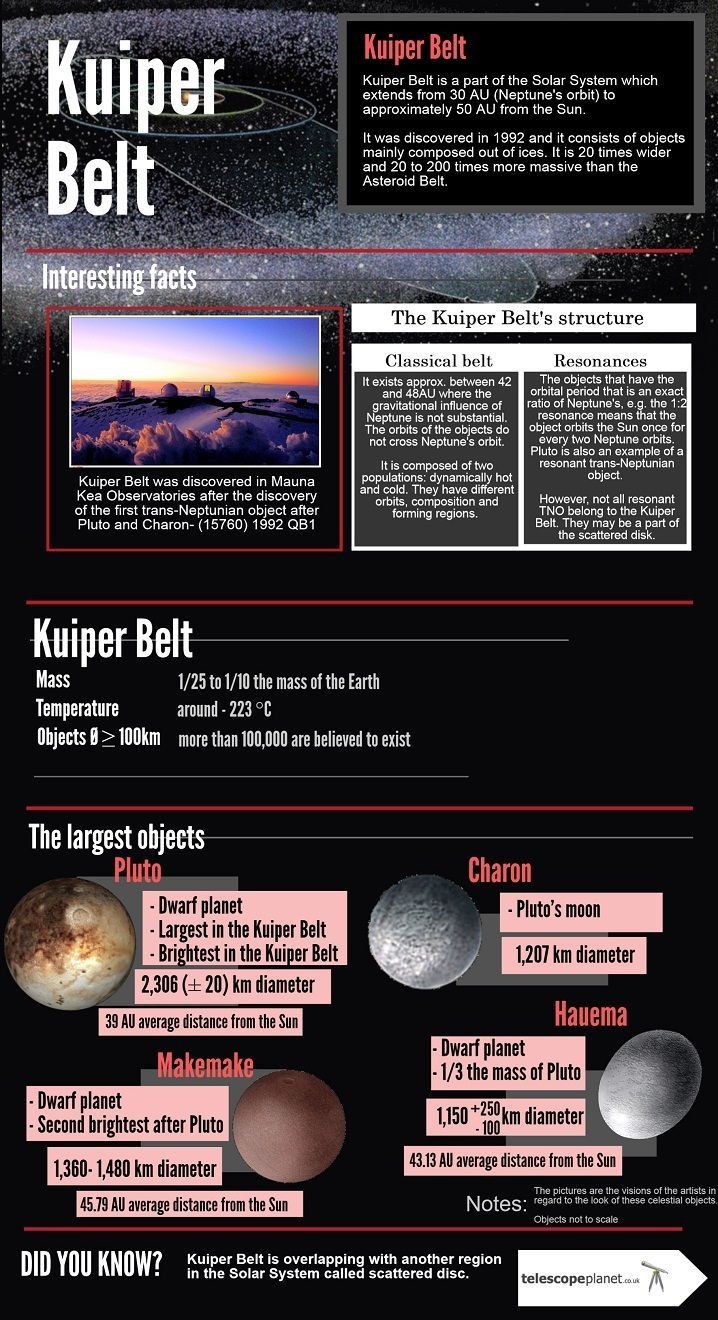Home > Sections > The Universe > The Kuiper Belt
Last Updated: 14th June 2023
ARCHIVED ITEM: this page is no longer updated.
The Kuiper Belt
Keywords
Kuiper Belt, donut, icy objects, Pluto, trans-Neptunian object, TNO, Oort cloud, planet x, planet 9.
Introduction
The Kuiper Belt. Where we've already talked about the Asteroid Belt, the Kuiper Belt is another type of asteroid belt that is home to many celestial objects, including Pluto and it's moons, large asteroids, and many smaller, icy object that's float around.
Features of the Belt
The belt itself lies beyond Neptune. This is commonly called trans-Neptunian objects, or TNOs. They are in the very distant region of space, beyond the orbit of Neptune.
The Kuiper Belt, though quite vast in size, and disc-shaped, it is still not the extreme of our Solar System, as there is a similar celestial object known as the Oort Cloud that sits further afield than the belt.
The Kuiper Belt is in fact split into two sections. A smaller area just outside Neptune's orbit is the first part, and the second area that overlaps the first is called the scattered disk, and that holds objects that remain in orbit up to 1,000AU (Astronomical Units). Considering the start of the belt is at around 50AU, that's a big expanse to fill with icy objects.
Interesting fact: there are five objects in the Kuiper Belt classed as dwarf planets: Pluto, Eris, Ceres, Haumea and Makemake.
Planet X
While we know that Pluto is not big enough to be classified as a true planet, there are theories backed up with evidence that suggest there might be another celestial body big enough to be considered a true planet. Photographic evidence has been taken of a planetoid that travels across the sky in the area of the belt. It has been nicknamed Planet 9.
How Was it Formed?
Much like the situation with Jupiter and the Asteroid Belt, the remnants of the Kuiper Belt happened not long after the Solar System was first created. Had Neptune not been where it is, there would have been another planet crested through gravity and orbital pulls.
Because of Neptune's immense gravity pull, the icy parts and objects that were broken were unable to form into a large planet, and ended up being the way they were instead.
Other Dwarf Planets
As well as Pluto, there are other dwarf planets including:
- Eris
- Makemake
- Haumea
Here is a YouTube video from Cosmoknowledge on the Kuiper Belt:




 Asteroid Belt
Asteroid Belt

